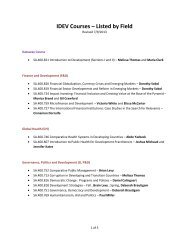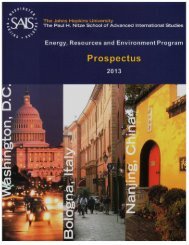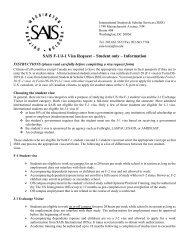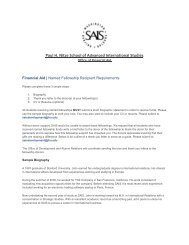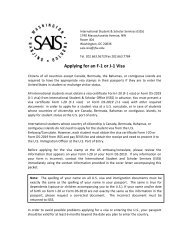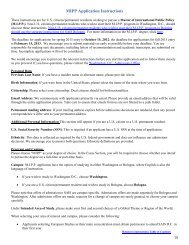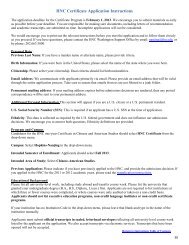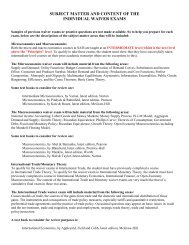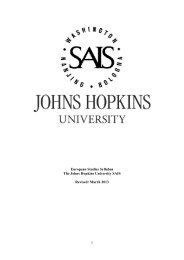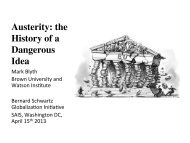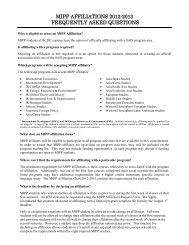Tunisia: Understanding Conflict 2012 - Johns Hopkins School of ...
Tunisia: Understanding Conflict 2012 - Johns Hopkins School of ...
Tunisia: Understanding Conflict 2012 - Johns Hopkins School of ...
You also want an ePaper? Increase the reach of your titles
YUMPU automatically turns print PDFs into web optimized ePapers that Google loves.
accounted for the majority <strong>of</strong> the force, varying accounts estimate the size <strong>of</strong> domestic<br />
security forces at between 120,000 and 200,000 prior to the revolution—one <strong>of</strong> the<br />
highest police-to-civilian ratios in the world. 37 No accurate estimates are presently<br />
available to account for the dissolution <strong>of</strong> the political police, but the number should be<br />
significantly less.<br />
The political police, <strong>of</strong>ficially the State Security Department, deserve special<br />
attention for its uncommon character and function, akin to the Iranian SAVAK or<br />
Russian FSB. The most controversial and nebulous <strong>of</strong> the three entities, the political<br />
police force was, until its dissolution, fundamental to the oppressive power <strong>of</strong> the ruling<br />
regime, and thus one <strong>of</strong> the primary reasons for its longevity. The force was created<br />
under Bourguiba in the 1960s to address the inability <strong>of</strong> the regular police to perform<br />
intelligence and surveillance operations necessary to the protection <strong>of</strong> the regime at a<br />
time <strong>of</strong> heightened political threat. From that time, the political police grew in number<br />
and scope and continued to flourish under Ben Ali after his ascension to power.<br />
All three elements fall under the administration <strong>of</strong> the Ministry <strong>of</strong> the Interior,<br />
which is nominally responsible for internal affairs, including all matters pertaining to<br />
internal security and “local development.” It is currently headed by Ali Larayedh, who<br />
replaced Habib Essid on 24 December 2011. Essid was, himself, only Minister since<br />
March <strong>of</strong> that year—one <strong>of</strong> several names shuffled into and out <strong>of</strong> the post in the months<br />
immediately prior to and following the revolution. The volatility <strong>of</strong> the position is<br />
indicative <strong>of</strong> its highly political nature, exercising control over the entirety <strong>of</strong> the internal<br />
security forces; Ben Ali himself held the position prior to his ascent to the presidency.<br />
Since the revolution, the leadership <strong>of</strong> the Ministry <strong>of</strong> the Interior and its subcomponents,<br />
like most other government bodies, has undergone significant reshuffling,<br />
but the current tumult <strong>of</strong> political affairs has made it difficult to establish with more<br />
precision the identities <strong>of</strong> those currently involved.<br />
37 Yezid Sayigh. “Agencies <strong>of</strong> Coercion” cites 120,000, while Alexis Arieff speculates 200,000,<br />
but both concede the exact number is unknown.<br />
154



